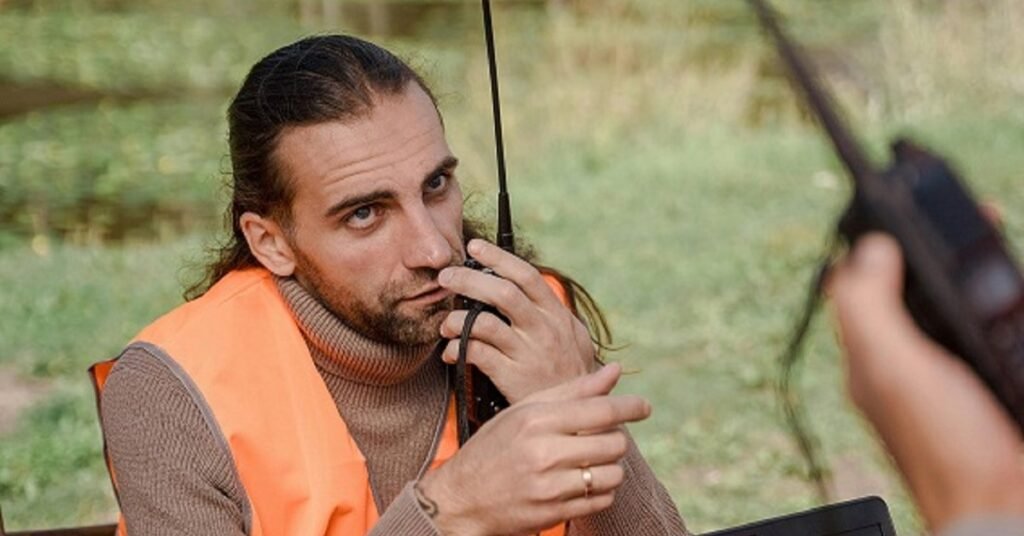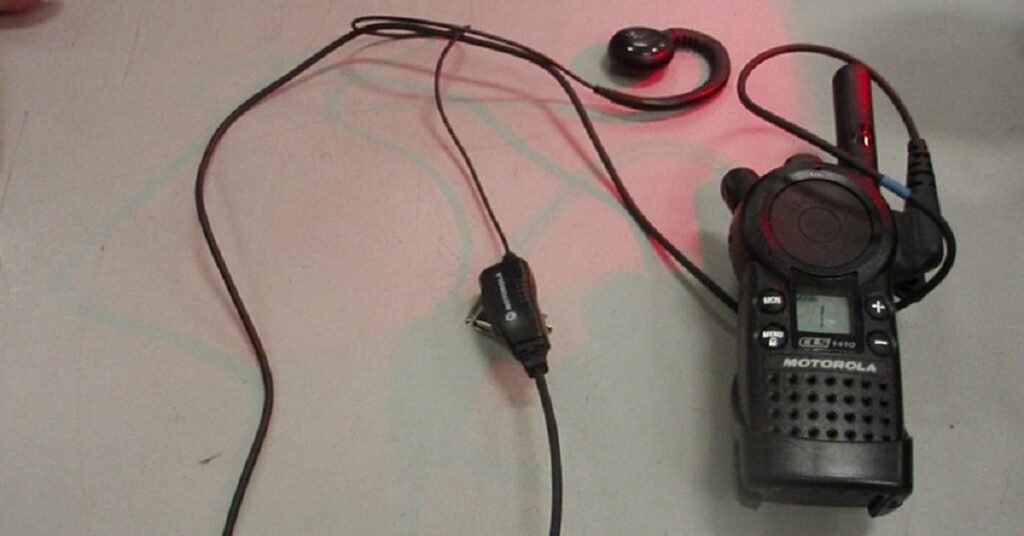Table of Contents
ToggleHam Radio Review: What Exactly is a Walkie-Talkie?
I felt, “This is amateur radio”, when I first started. Variable number — “The height of Communication”. Eventually, I came across a simple walkie-talkie. Walkie-talkie is the first device for anyone who takes two way radio communication as a hobby like me. Now some of my ham radio operators may insist about why we need to be concerned about walkie-talkie. They mostly use professional CB radio. But in my opinion understanding walkie-talkie should be the primary concern for anyone planning to be a ham operator or primary users. Today in this ham radio review, we will learn more about walkie-talkies.
How to Use Amateur Radio
With that in mind, this ham radio review starts the same way all walkie-talkies do.
The basic rule of radio communication is that a signal is sent and received via various radio frequencies. Across the world, there are many communication divisions, and amateur or ham radio is one of the most important. It allows two-way communication without any central authority or middleman, such as traditional networks like phone lines or the internet. Ham radio keeps the conversation going when everything else quits working — from smoke signals to cell towers, and even the internet.
The radio frequency principle is the foundation for all two-way communication, including walkie-talkies. As this ham radio review shows, walkie-talkies could save the day when other communication methods fail — whether at a music festival or miles from civilization in the forest. FYI for radio frequency geeks, read this for more details! But for now, let’s stick to the basics of walkie-talkie communication.
Ham Radio: The Must-Have Journey Partner

But what exactly is a walkie-talkie? Its technical term is a handheld transceiver (HT). It’s a battery-powered, handheld wireless communicator that operates on certain radio frequencies. No Wi-Fi, no mobile networks — walkie-talkies use radio waves. AM/FM radio, however, doesn’t work like ham radios. Click here to learn why their working styles are different.
As we already understand, walkie-talkies work with radio waves. So it can communicate with another ham radio which is on the same frequency where your phone network fails. So if you are in a remote place and moving, walkie-talkie can be your best partner for communication. This is the magic of radio frequencies.
Method of Radio Technology: Ham Radio Review
Yes, walkie-talkie may look like a simple device sending your voice and receiving other’s wirelessly within the area coverage. You just press the PTT button to transmit and someone sends you by pressing PTT of his/her radio device. But actually the mechanism is not that easy. Usually any basic walkie-talkie works in half-duplex mode. That means a group of people using the same frequency channel for communicating with each other, all of them except one have to listen at a time while one transmits the voice. At single time a walkie-talkie cannot send and receive. Need more information? Continue down the rabbit hole by clicking here.
Features and Modern Upgrades of Handheld Radio
At present lots of upgraded features are added in modern walkie-talkies. Dual band capability, GPS activation, dual channel monitoring, range upgradation, internet based walkie-talkie are the most popular upgrades. Although I don’t trust the internet based walkie-talkie which actually does not follow the radio technology. Now let’s talk about dual band capability, which I believe is the major upgrade of modern research of radio communication.
Dual Band Capability (Major Upgrade)

A walkie-talkie with dual band capability is the way by which a handheld radio can transmit and receive with two different bands. They work normally with two brands of frequencies, VHF and UHF. VHF and UHF frequencies have different wavelengths and different characters of operations. They also different in range coverage. If we got a dual band walkie-talkie, we can actually use VHF or UHF band according to our communication environment or obstacles we are facing. Also there are lots of modes which are also dual channel monitoring capable. By these you can use two separate channels to transmit and receive at a time. Think, you can set one channel to VHF band other to UHF band.
If you are searching for a cheap dual band and dual monitoring walkie-talkie, my personal choice is the Baofeng UV-5R or UV-82 model. It allows users to switch between bands to suit their communication needs. This model, which supports both UHF and VHF bands, is especially useful for off-road adventures. This feature is often mentioned in ham radio reviews, as it gives users the flexibility they need.
Extending the Range
What about the short range of walkie-talkies? Yes, a walkie-talkie can cover 1km-5km according to the model. So how to extend the range. Sometimes we need more coverage. In that case we can use an external antenna to extend the range. We made a perfect conversation between 10km using an external antenna with our UV-5R. It’s pretty natural. The truth, according to ham radio reviews, depends on weather, landscape, and obstacles. Flatter areas with fewer obstacles generally allow walkie-talkies to transmit farther. Performance is also influenced by trees, buildings, and even weather conditions. You might check here about how far a portable walkie-talkie can connect.
UHF vs VHF: The Big Frequency Debate
Now, let’s settle a long-standing debate in the radio industry — UHF or VHF?
UHF (Ultra High Frequency) is very good for areas full of obstacles and barriers. If you are communicating in an area where there are lots of buildings, high hills or walls to overcome for communicating with others, UHF is a perfect choice. But this also has the disadvantage of low coverage. UHF frequencies are more reliable at different weather conditions.
On the other hand, VHF (Very High Frequency) is for better range. VHF can travel more area than UHF frequencies. If you are transmitting in an area where there is a flat surface, not many obstacles, then VHF can reach you much more range. So it is perfect to communicate long distance in an open area. And also sometimes it requires a perfect weather condition to get expected range. VHF is not reliable in a complex environment.
If you want to know more about VHF and UHF. Which is the best for perfect communication. Check here.
A Pro Way to Program Frequencies For Walkie-Talkie

For getting the best outcome from your walkie-talkie you should program and set up the firmware perfectly. I never prefer using factory settings as they can interfere with others using the same models nearby. Proper programming is crucial for optimal performance. Things can go wrong if settings aren’t correct, leading to a frustratingly short range or garbled communication. Device setup is just as important — it’s best to do it right the first time.
Make sure you’re using the correct frequency band for your environment. For instance, UHF is better for urban areas because higher frequencies can penetrate buildings and walls more effectively. VHF is often better for rural areas.
Beginner Advice: Keep it Simple, Keep it Real
If you are reading this article, I believe you are new to the radio communication world. And if you are interested in picking a two way radio and entering this world of communication, I think you should grab any dual band capable walkie-talkie. UHF only or VHF only may be an easier option for you according to your communication area and environment, but trust me after some experience you will check for other ones you didn’t buy. So buying a single band won’t be a good choice for you. And for a beginning I don’t want you to invest a lot of money buying your first walkie-talkie. You can have a cheap dual mode, dual channel monitoring walkie-talkie.My personal budget friendly model is the Baofeng UV-5R. This device is very much user friendly and easy to reprogram. You just need to install a tiny free software called CHIRP which is also compatible with many other ham radio devices. With a data cable provided with the device you can easily do the programming of your device.
If you wish to have a single band UHF model which is a very cheap and basic walkie-talkie device but not bad for beginners. Then you should check the Baofeng BF888S. This also meets your goal to learn the basics of wireless radio communication.
Remember before buying a ham radio device, not all devices specially the cheap chinese walkie-talkies will reach the advertised range and won’t give you the maximum transmission power. However, you can start your tour to the radio world.
Real-World Uses for Walkie-Talkies
Many of us think that walkie-talkie is only for emergency communication. But they are actually very useful and compatible in many different situations. They provide reliable connectivity for business, events, and everyday use. For example, at concerts or festivals where cellular networks are overloaded, walkie-talkies can be a reliable backup.
Professional Uses
Construction sites and security teams rely on walkie-talkies for effective communication. Academic coordinators also use them to organize events over large campuses or during field trips.
Recreational Uses
Walkie-talkies make communication easy and fun during outdoor activities like skiing, paintball games, or hiking trips, ensuring everyone stays connected.
Final Thought
Walkie-talkie or handheld radio device may look like a very simple device with no internet connection or wifi availability. But, you see it has a very complex mechanism of processing, sending and receiving signals. It can be your best friend when you are on a group tour, hiking, exploring a remote area, working on height or maybe to create a free costing network to communicate with. By this ham radio review we understand that a walkie-talkie is not just a device for playing. Rather it is a very real and practical tool which can sometimes save your day.
Next time you get a handheld radio, do not forget it’s more than just a electronic gadget. You’re holding a lifeline of communication. When it comes to ham radio or the need for a reliable backup, a walkie-talkie offers instant communication that could make all the difference in a critical moment.


